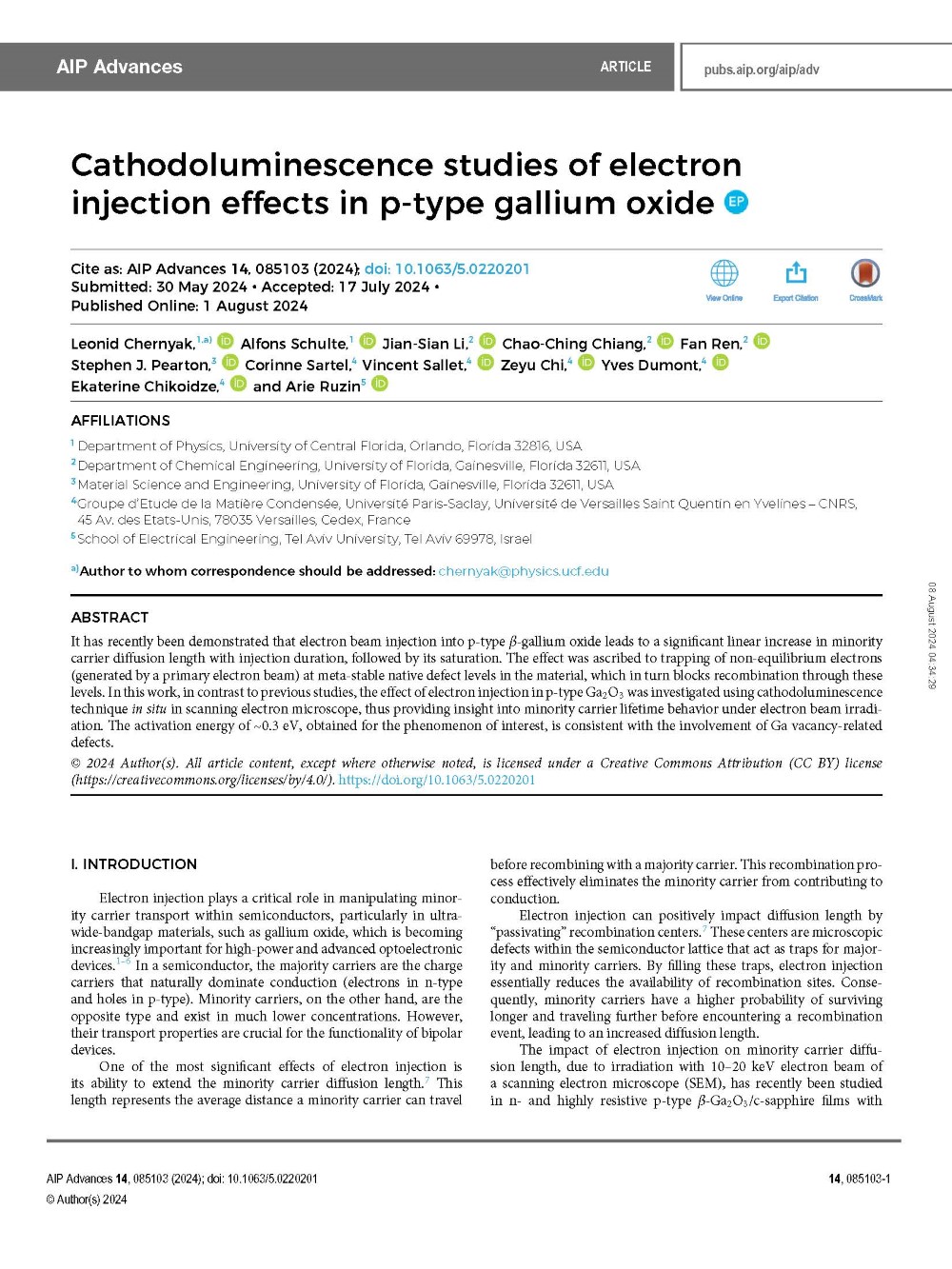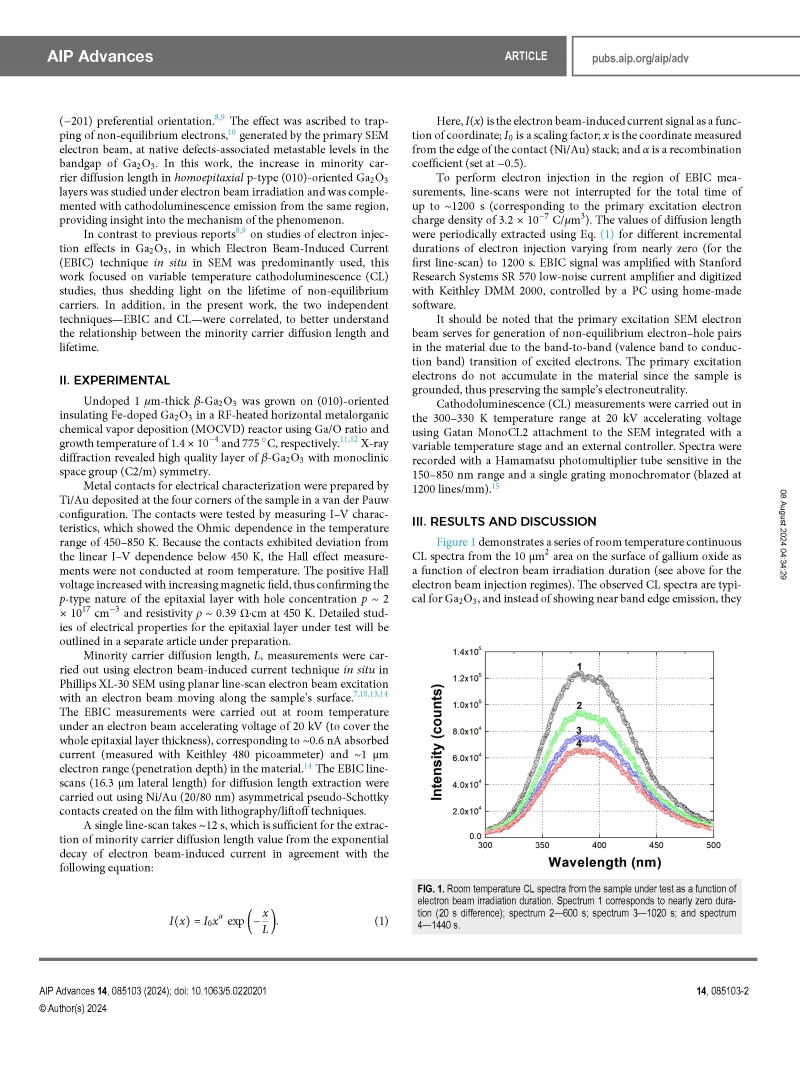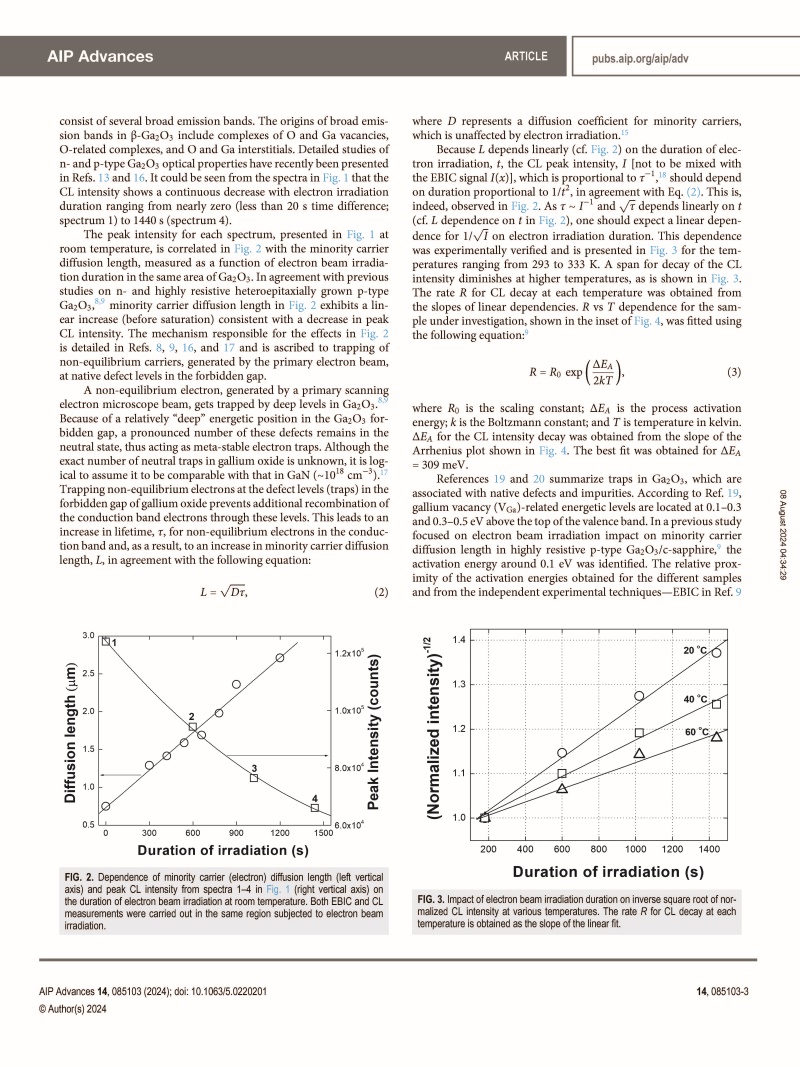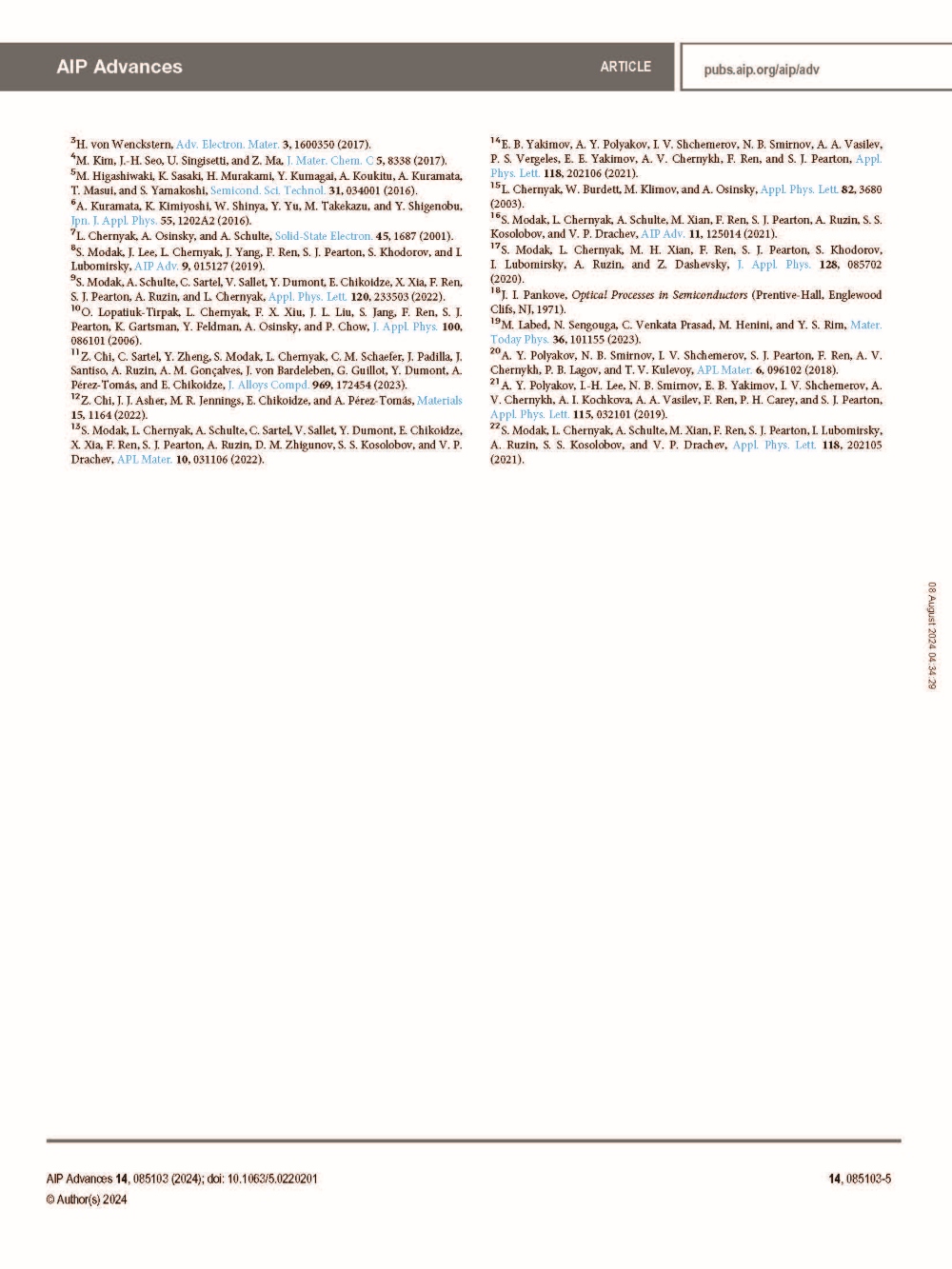
【International Papers】Researchers from the University of Central Florida of Cathodoluminescence studies of electron injection effects in p-type gallium oxide
日期:2024-09-20阅读:507
Researchers from the University of Central Florida have published a dissertation titled "Cathodoluminescence studies of electron injection effects in p-type gallium oxide" in AIP Advances.
The research at UCF was supported in part by NSF and others. The U.S. National Science Foundation (NSF) is an independent agency of the United States federal government that supports fundamental research and education in all the non-medical fields of science and engineering.
Dr. Chernyak received his PhD in Physics from Weizmann Institute of Science (Israel) in 1996. He spent one year (1996-1997) as a Research Associate in the Departments of Electrical Engineering at Colorado State University (Fort Collins, Colorado, USA) and Texas Tech University (Lubbock, Texas, USA). He joined UCF in 1999 where he is a Professor.
ABSTRACT
It has recently been demonstrated that electron beam injection into p-type β-gallium oxide leads to a significant linear increase in minority carrier diffusion length with injection duration, followed by its saturation. The effect was ascribed to trapping of non-equilibrium electrons (generated by a primary electron beam) at meta-stable native defect levels in the material, which in turn blocks recombination through these levels. In this work, in contrast to previous studies, the effect of electron injection in p-type Ga2O3 was investigated using cathodoluminescence technique in situ in scanning electron microscope, thus providing insight into minority carrier lifetime behavior under electron beam irradiation. The activation energy of ∼0.3 eV, obtained for the phenomenon of interest, is consistent with the involvement of Ga vacancy-related defects.
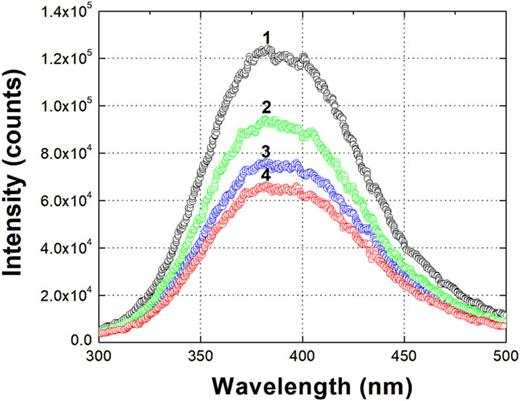
FIG. 1. Room temperature CL spectra from the sample under test as a function of electron beam irradiation duration. Spectrum 1 corresponds to nearly zero duration (20 s difference); spectrum 2—600 s; spectrum 3—1020 s; and spectrum 4—1440 s.
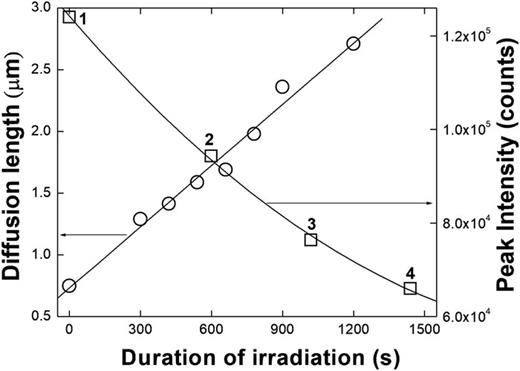
FIG. 2. Dependence of minority carrier (electron) diffusion length (left vertical axis) and peak CL intensity from spectra 1–4 in Fig. 1 (right vertical axis) on the duration of electron beam irradiation at room temperature. Both EBIC and CL measurements were carried out in the same region subjected to electron beam irradiation.
DOI:https://doi.org/10.1063/5.0220201
